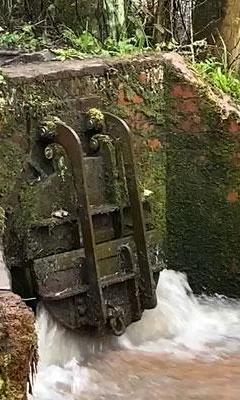The microbial risks of UK urban flooding
Posted on June 3, 2021 by Sophie Scutt
I am a currently studying in the department of civil and structural engineering, supervised by Dr Isabel Douterelo Soler, Dr James Shucksmith, and Dr Henriette Jensen. As my undergraduate degree was in Biology, working in the engineering department has definitely been a big change. However, it’s really exciting to see how biology can be applied to civil engineering to help investigate complex problems, such as the risk posed by floods to public health.
In this blog Sophie Scutt, first year PhD student at the University of Sheffield, discusses her research into the microbiology – and associated public health risks – of urban flooding in the UK.

Extreme weather and rising temperatures due to climate change, cause intense hydrological events to occur more frequently. In the UK, heavy rain is common and seemingly part of our climate. Despite this, UK drainage systems – most of which were built in the Victorian era – are not designed to deal with the increased intense rainfall that we get today. Many drainage systems are fitted with ‘release valves’ for when capacity is reached, taking the form of outlets that release excess water into water courses. However, since the inception of these systems, rainfall and population density have increased, and so water from the sewer often overflows before it can reach the release outlet. This is further compounded by issues such as damaged infrastructure, blockages or drainage pipe misconnections.
So, once the sewer water spills out of the sewer via manholes or gulleys, what problems does this cause? Well most sewer systems tend to be ‘combined sewer systems’ and hold both wastewater from our homes and rainwater that drains from roads and streets. This mixture of now diluted sewage usually makes its way to a treatment plant. However, if it spills before reaching the plant, diluted sewage can form a ‘flood’. This flood water contains waste, and thus many species of pathogenic micro-organisms that tend to be transmitted via a faecal-oral route, including E.coli, Leptospira and Campylobacter. These pathogens can cause gastrointestinal illness and in the case of Leptospira, the more serious Weil’s disease.

We know that this is a risk in the short term – for example, if members of the public are splashed with contaminated floodwater – however, what our group are interested in are the longer-term risks. After the floodwater withdraws, do the pathogens remain? Do they attach to urban surfaces and soils? Can they move into and out of the soil profile? More importantly can they survive, and for how long? These are the questions this project aims to answer.
Our plan is to use a combination of lab and field work to determine the behaviour of various pathogens found in floodwater during, and following, a flood event. In the lab, I have designed an adapted acrylic column that we plan to fill with soil and recreate a flood event in a controlled way. Water and soil samples will be taken over time at varying depths. We will also take water and soil samples in the field, at two or three sites that are prone to surface flooding. This field sampling will take place over a year to track any seasonal changes.

Soil and water samples will be analysed using DNA extraction and analysis by qPCR, as well as flow cytometry to determine the species of pathogen present. We want to identify how many pathogens are present in each sample, and if they are alive or dead. This will allow us to generate data that can then be used to assess the risk an area that has recently flooded poses to the health of members of the public.
Due to the pandemic, we have not yet been able to collect any data, but I plan to begin field sampling this summer. As a student, it’s really important to me that my work helps to make a difference, and I think it’s a really exciting time to be working at the intersection of science and engineering. I’m hopeful this project will help inform others about the health risks of floods, hopefully aid in safeguarding public health, and maybe even highlight the weaknesses and consequences of damaged or old drainage systems.

